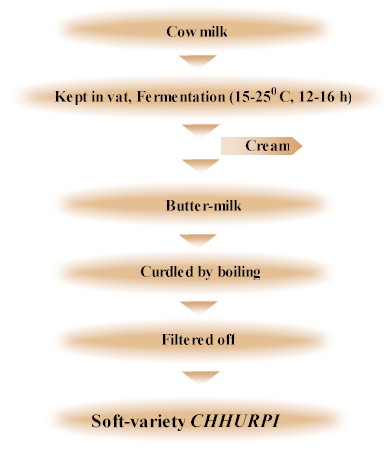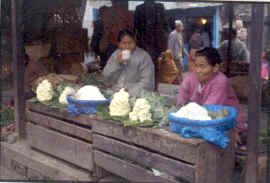During
traditional method of chhurpi preparation, dahi is churned in a bamboo
vessel. Following separation of cream, the butter milk ‘mohi’ is curdled by boiling and filtered through a piece of
muslin cloth. The coagulum is kept under pressure for 3-5 h to prepare
soft variety chhurpi (Fig 2). It
can be kept for 2-3 days.

Fig.2
Flow sheet of traditional method of soft-variety Chhurpi preparation |
 Chhurpi is sold
in all local periodical markets, called ‘haats’ of these regions by ruralwomen. It is packed in the leaves of Ficus hookeriana, and then tied loosely by straw. One
kg of chhurpi costs about Rs.60/-. Chhurpi is sold
in all local periodical markets, called ‘haats’ of these regions by ruralwomen. It is packed in the leaves of Ficus hookeriana, and then tied loosely by straw. One
kg of chhurpi costs about Rs.60/-.

Chhurpi is characterized by lactic- acid- bacteria fermentation.
The predominant lactic acid bacteria are Lactobacillus plantarum, Lb.
curvatus, Lb. fermentu, Lb. paracasei subsp. pseudoplantarum and Leuconostoc mesenteroides, (Tamang et
al., 2000). |